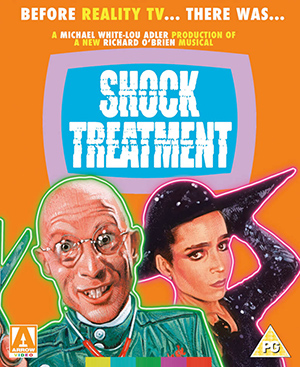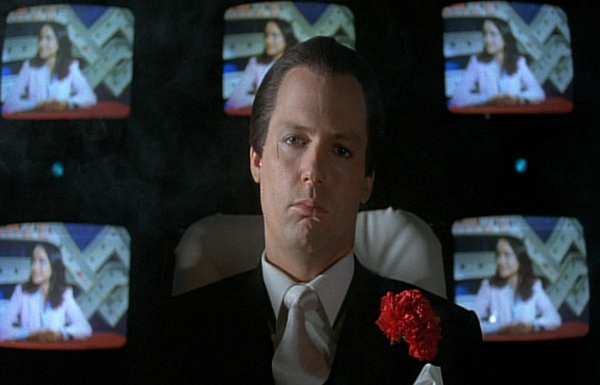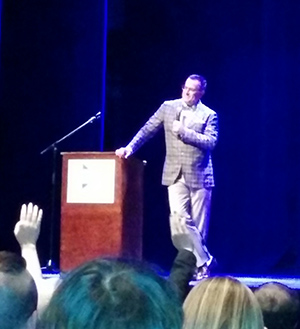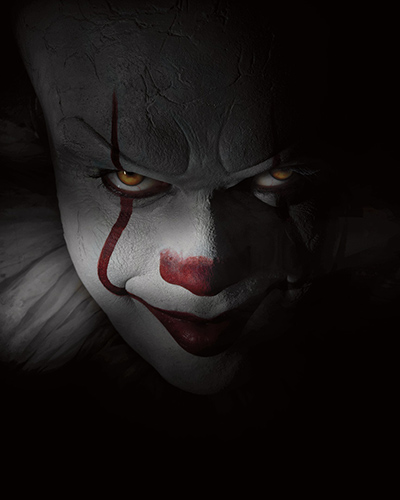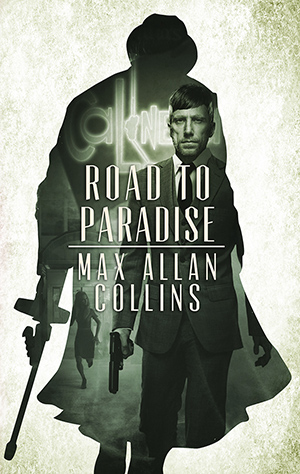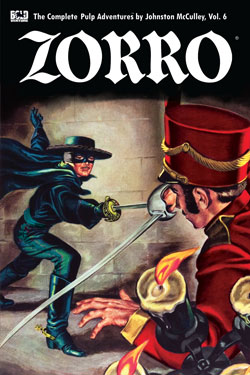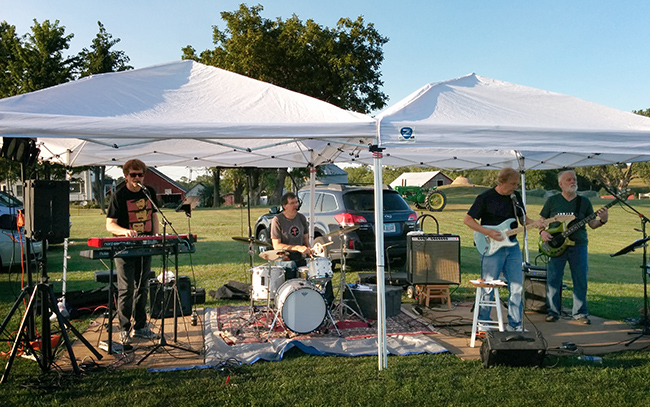When I landed the Dick Tracy writing gig in 1977, I received a nice advance of $5000. As half of a young married couple, with limited financial means, I somehow convinced my wife Barb that the first thing we should do was buy a home video recorder. I bought a VCR console, which was outlandishly expensive (despite its modest 19-inch screen), an unjustifiable extravagance amplified by my brilliant choice of formats: Betamax.
But I mention this only to let you know that the Collins household (all two of us) were early adapters in the home video revolution. You need to know this to understand that you are indeed in the presence of the person who invented binge watching.
Around 1979, the Australian TV series Prisoner Cell Block H was syndicated nationally. It’s a wonderful women-in-prison series that has recently been updated into the equally wonderful Wentworth. For some reason, the local channel running the syndicated show dropped it after a few weeks – maybe it had something to do with the rampant violence and lesbianism or maybe the Aussie accents.
But I was not to be denied (I rarely am).
I approached a friend of mine in Chicago who ran a comic book shop to work out a trade deal for original comics art for his ongoing efforts to record the five-times-a-week series for me on VHS (I had one of those machines now, too). Every couple of months he would send me a box of tapes, each package containing around 20 hours of Prisoner Cell Block H. Barb and I, and my cartoonist pal and collaborator Terry Beatty, would hunker in to watch the episodes until our eyes burned. This would be on the weekend, consuming two days (allowing time out for meals and calls of nature).
We did not call it binge watching, but clearly that is what it was. The same comic book shop pal did the same for me with the 1960s-70s Dragnet, which had not yet hit Nick at Night because it didn’t exist yet. Again, these were sent to me four or five shows to a tape, as the series was being “stripped” nightly. Barb and Terry did not join me for this, not being insane, and the binging would usually only be one or two VHS tapes a night.
The first binge watching from pre-recorded tapes came with Poldark, both seasons of which Barb and I consumed in a weekend. Over the years this approach to TV watching continued with the pre-recorded Poirot tapes and beyond. During my son Nate’s college years, he would come home for the weekend when informed that a new DVD season of LEXX had arrived (my favorite science-fiction series). These would be watched, binge-style.
To this day, Barb and I binge in this fashion, although sometimes not quite as aggressively. A House of Cards season usually lasts only two days, but with mystery shows like Murdoch or Midsomer Murders, we hold ourselves to two or three a night, because things in that happily homicidal world start to blur otherwise.
One bad side-effect of binge-watching seasons of favorite shows – particularly when you haven’t followed them in their bite-size weekly episodes – is that a new season can at first seem to have nothing to do with anything you’ve ever seen before. We had that experience with two excellent series that we’ve followed from the beginning – Ripper Street and Orphan Black – both of which we chugged in a couple of gulps.
What happens is that the first episode of the season makes you wonder if you skipped a season, but by the second episode, it begins to come back – especially when two of you are watching, as Barb and I will prompt each other as memories come floating or sometimes bursting back.
So I’ll comment briefly on a couple of series we’ve binged of late.
Poldark Season Three. While Barb and I are devoted fans of the original series, this remake is equally faithful to the books and has the production values of a fairly big-budget feature film, with breathtaking Cornwall location work. Aidan Turner and Eleanor Tomlinson do very well as Ross and Demelza, and again the original Poldark, Robin Ellis, is back for a nice scene…a fine show of respect for the original classic series.
Murdoch Mysteries Season 10 – For some while now, Murdoch has been running 18 episodes. This charming, often amusing mystery series – which still plays as a turn of the century CSI – likes to bring characters back, and because those characters have appeared in single episodes (not story arcs), it can be tough to recall them. Also, we always have a little trouble getting used to the non-regulars in the casts because the Canadian acting style can have a dinner theater vibe…but you do get used to it. And the regulars are strong and very comfy in their roles – Yannick Bisson as Murdoch, Helene Joy as Dr. Julia Ogden, Jonny Harris as Constable George Crabtree, and in particular Thomas Craig as Inspector Thomas Brackenreid, who recalls Gene Hunt in Life on Mars. The tenth season begins jokey and at first seems weak, but by mid-point it’s playing well, even revealing itself as a particularly strong season, getting more serious and darker as it goes.
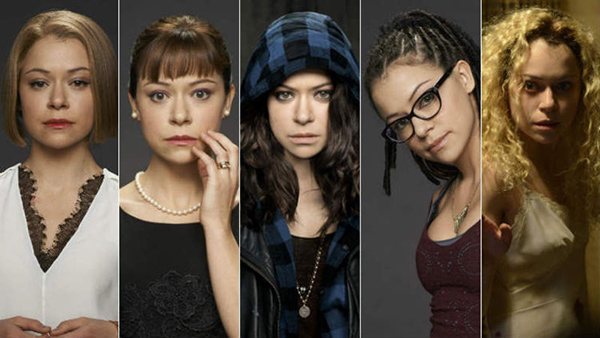
Orphan Black Season Five. Orphan Black shares a charming recurring actor – Kristian Brunn – with Murdoch. Otherwise the shows have little in common, and the guest casts never have that dinner theater vibe. Two things are particularly outstanding about this series. First, it’s one of those convoluted, complex science-fiction/fantasy series in the X-Files mode that seems to be getting so ever more complicated, you suspect it doesn’t know where it’s going (Lost, anyone?). Well, Season Five is the final season of Orphan Black and everything from the previous four is paid off with thought and emotion, and no small amount of clever plotting. Virtually everybody of any importance is back from the run of the show and loose ends are not in abundance.
Second, lead Tatiana Maslany may be the best actress of her generation, or maybe several generations, as she portrays the various “clone” sisters who are the orphans of the title, each one distinct in look, mannerism and overall characterization. She is a wonder (and the technical expertise of the “sisters” interacting is mindboggling). Particularly interesting, and rewarding, is the decision of co-creators John Fawcett and Graeme Manson to wrap up the exciting, often frightening storyline midway through the final episode, and follow it with a “three months later” half-an-episode that suggests where the characters are heading and how they are, or are not, dealing with what they’ve been through.
Ripper Street Season Five. Ripper Street, set in Whitechappel just after Jack the Ripper’s reign, is like a much, much darker Murdoch Mysteries. Lead Matthew Macfadyen as Detective Inspector Reid brings modern police methods to London’s most barbaric area with the help of his American forensics expert, Adam Rothenberg as Captain Homer Jackson. Like Murdoch, Ripper Street appears initially to have been born out of the popularity of CSI, but has outlived its inspiration, and surpassed its accomplishments. Creator Richard Warlow wrote around two-thirds of the episodes (early seasons ran 8 episodes, later one 6) and he does not stint on wild plot twists and grittily horrific crimes, but the characters are so real and compelling – and not always admirable – that you will likely stick with them.
Orphan Black runs 50 episodes, and Ripper Street 37, so binging on their complete runs is doable, and will not provide the confusion that those of us doing so a season at time can experience. Murdoch is well over 100 episodes now, so binge-watching can take planning and patience.
So, yes, now that you ask – I did indeed invent binge-watching, with Barb’s help, and Terry’s.
You’re welcome.
Hey, I bet you didn’t know Road to Perdition came from a comic book. You do? Check this out anyway.
M.A.C.
